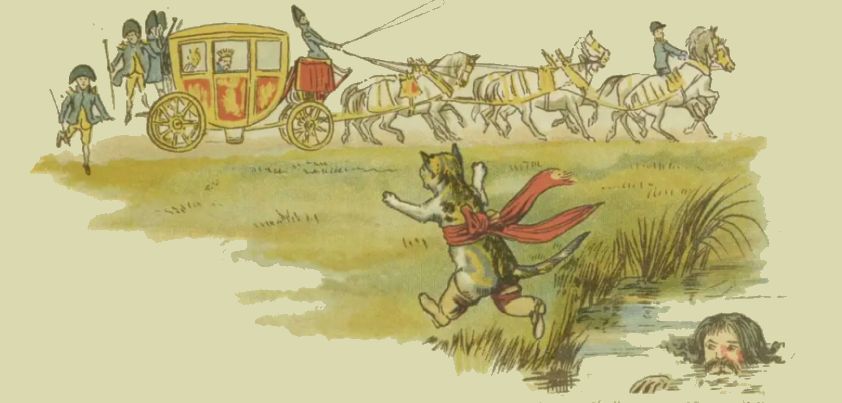 Puss in Boots is sometimes criticized for the mixed message it sends to children. Derived from a 14th Century Italian folktale, a clever cat helps its slow-witted master win the heart of a princess through trickery, lies, threats and theft. To condemn the story because of this seems a little unfair, since folklore is full of likeable tricksters whose crimes are far worse than the cat’s. These characters often play an important role, challenging traditional beliefs through satire. Here, the cat’s actions show up both the greed and gullibility of the king and the shallowness of his daughter.
Puss in Boots is sometimes criticized for the mixed message it sends to children. Derived from a 14th Century Italian folktale, a clever cat helps its slow-witted master win the heart of a princess through trickery, lies, threats and theft. To condemn the story because of this seems a little unfair, since folklore is full of likeable tricksters whose crimes are far worse than the cat’s. These characters often play an important role, challenging traditional beliefs through satire. Here, the cat’s actions show up both the greed and gullibility of the king and the shallowness of his daughter.
Original Text / PDF (1,726 words)
General Comments
Our source for Puss in Boots was an English version of the Perrault story published in The Blue Fairy Book, one of a series of twelve collections of folk and fairy tales for children edited by Andrew Lang. This is the first book in the series, and was first published in 1889. The book contains translations of seven Perrault stories, but omits an important aspect of each: Perrault’s morals. For Puss in Boots, these are:
Moral 1: There is great advantage in receiving a large inheritance, but diligence and ingenuity are worth more than wealth acquired from others.
Moral 2: If a miller’s son can win the heart of a princess in so short a time, causing her to gaze at him with lovelorn eyes, it must be due to his clothes, his appearance, and his youth. These things do play a role in matters of the heart.
As with several of Perrault’s other stories, one of these morals is rather playful. The third son showed no diligence or ingenuity in winning the princess (he left it to the cat!) and all of his resulting wealth came from others (the king).
Origin of the Story: Costantino Fortunato
Perrault’s source and the earliest written version of the story can be found in Giovanni Francesco Straparola’s 14th century work The Facetious Nights. The story appears in its second volume under the chapter styled “Night the Eleventh, The First Fable: Soriana dies and leaves three sons, Dusolino, Tesifone, and Costantino. The last-named, by the aid of his cat, gains the lordship of a powerful kingdom.” In comparing the two, it can be seen that Perrault changed a number of elements (including adding the now famous boots!) in order to make the story more attractive to children.
Costantino Fortunato Text / PDF (1,865 words)